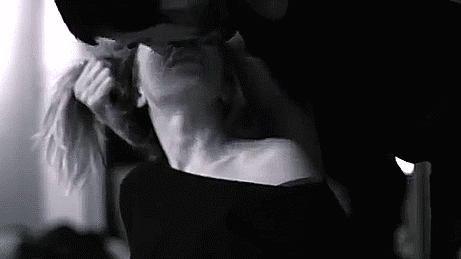Herbs Good For Luck
Herbs Good For Luck
Allspice: Incense made of allspice herb are used to promote luck, health, and happiness
Chamomile: It is the gambler’s lucky herb. Not long ago, gamblers were known to bathe their hands in chamomile solutions for better luck at gaming (they may be still doing it)
Frankincense: The Magi presented this aromatic herb to the savior. Carrying a small piece is considered lucky
Nutmeg: Long considered a charm for good luck, nutmegs are work as lockets and bracelets. They are often strung along with star anise.
Sandalwood: Burnt as incense, and used in soaps and talcum powder, sandalwood is a sign of luck and prosperity.
More Posts from Theglitterdungeon and Others


Who says you need fancy software skillz to share your spread creations??
This is the Calm&Centre spread, AKA Everything Sucks, Help! It’s for gentle guidance on staying focused and taking care of yourself in the middle of a crisis, without burying your head in the sand.
1. The Head - what you should know 2. The Heart - ways to comfort yourself 3. The Heart - ways to heal 4&5. The Hands - ways you can care for yourself 6. The Core - knowing this will strengthen you 7. The Core - this needs addressing 8. The Feet - how to stay focused and present 9. The Centre - key card/ exactly where you are right now.
Sharing for @violetwitchcraft!

Simple Positivity Spell
Materials: -Any color candle (other than white or black) -Black candle -White candle
1. Light your random colored candle to represent yourself.
2. Light the black candle from the other candle’s flame. Focus on your negativity (the flame) moving from yourself to the black candle.
3. Blow out your candle.
4. Light the white candle with the black one, converting the negative energy into positive.
5. Blow out black candle.
6. Re-light your candle with the white one, pouring the positive energy into you.
7. Blow out both candles.
+ If you want, circle the white candle’s smoke around you after you blow it out. Make the smoke your shield from negativity.

#1 Masterpost: Astro Basics
The 12 Signs
Planets
Houses
Elements
Qualities
Opposite Signs
Degrees
The 13th Sign?
Useful Image Post
Astro Books
Sign/Planet/House
Condensed Info
Find your Sun, Moon, Rising, Midheaven (10th house)
Find your Venus Sign
Find your Mars Sign
Find your Mercury Sign
Find all your placements
How to: Planets in Houses

Candy Corn Fudge
Of Imps and Familiars
The topic of Familiars in modern witchcraft is a bit misinformed as to what exactly these beings are. Some say they are simply a pet belonging to a witch; however, it is far from the case. In the hopes of clearing things a bit up for my followers, I am writing this to explain what Familiars are and the differences between the different types. This post will provide a brief summary of the topic
There are a few different types of Familiars to consider. There are:
The Familiar Spirit
Imps
Familiar spirits
Bloodline Familiars
Let’s discuss what they are and how they differ from another.
The Familiar Spirit

Tam Lin by Jane Yolen and Charles Mikolaycak
This is somewhat comparable to the Holy Guardian Angel found in various practices of high and ceremonial magic, such as the Order of the Golden Dawn. It is the human familiar spirit, the fairy lover, the demon lover, the spirit companion, the familiar self, the witch’s doppleganger. It is the you that is separate, yet it is its own entity. These are the beings that witches met when flying to the sabbat, their spirit lover. Typically, it is opposite to the witch, “In 1633, Margaret Johnson, the Lancashire witch, stated that besides theire particular familiars or spirits, there was one greate or grand devill, or spirit, more eminent than the rest. Shee allsoe saith, yt if a witch have but one marke, shee hath but one spirit; if two, then two spirits; if three, yet but two spirits. Shee alsoe saith, that men witches usually have women spirits, and women witches men spirits,” (source). It might be that these spirits are complete opposites to their witch counterpart; however, it may also be they take a form most desired by the witch. It is why some have Familiar spirits of the same gender, or spirits that change gender along with their witch.
Examples of The Familiar Spirit
Tam Lin (from the Ballad of Tam Lin)
The Queen of Heaven (from Thomas the Rhymer)
Cupid (from the tale The Most Pleasant and Delectable Tale of the Marriage of Cupid and Psyche)
Imps

The Witches’ animal familiar, maleficent animals, divination animals, domestic familiars. These are, usually, physical creatures or vessels that act as the witch’s familiar. These are the creatures people typically think of when thinking of familiars. They are the witch’s pet, servator, companion, spy, and aid in the magical arts.
Now from this, there are 2 main sort of imps. A living creature of flesh such as a rabbit, cat, or dog. There are also imps that are merely spirits tied to a vessel. These vessels can be anything from stuffed animals to bottles or urns. The Familiar’s spirit possesses the vessel, which then it seeks to serve the witch. It can be an actual spirit or even created by a witch (or even by another spirit). Now the interesting part of this is that the living creatures can even act as vessels for familiar spirits.
Imps are the creatures you see depicted being fed blood from witches. Witches allow familiars to suckle blood from their witch marks to forge the pact between the two. The imp receiving care and food, and the witch receiving aid and power from the imp. The pact between the two is what makes an imp the witches’ familiar (vs just a regular pet or spirit).
Familiar spirits

A witch can have many familiar spirits, which take many forms. Though, they tend to be animal in form. There are some known to be human or even “supernatural” in form. There are descriptions of familiar spirits that are fairies, spirits of the dead, saints, devils, demons, and even angels. Some witches state they had certain plants as their familiars.
They take similar roles to spirit guides and spirit helpers; however, they, like imps, also require a pact as well. A witch can have many familiar spirits all that serve their needs depending on the reason for the pact. However, the pact isn’t always made through physical means vs the pact made with imps.
Bloodline Familiars
Bloodline familiars are those that are passed down from hereditary practices, from parent to child. Covens have also been known to have these, and can give access to these familiars through initiatory means. They are familiars that serve specific bloodlines or groups, and only grant their power and aid to those within it.
One can also argue that a Bloodline familiar is not truly a spirit, but rather an icon. A symbol of that family or coven, in which appears in dreams as a sign or omen. I attempted to do more research into this, but it was only mentioned in one of my texts, “There is that which is used as the coven “totem” animal, mentioned earlier in connection with the symbolism of the witch bracelet. This symbolic animal form is decided upon at the formation of a coven by mutual agreement among the members and after much introspection and divination. The chosen totemic animal form or forms, for there may be several, is then ritually “assumed” by coven members during the chain dance at the Sabbat itself, and also should they at any time wish to indulge in the practice of “sending for the fetch,” commonly Omens and auguries of coming events may also be drawn by the seasoned practitioner from the appearance on the scene of one such specimen of a coven totem, a grey bird maybe or a large black cat. Part of this witchlore may have filtered out in the past and now be responsible for the common public beliefs about lucky or unlucky black cats crossing one’s path, and so on,” (Mastering Witchcraft by Paul Huson).
As a note, I believe it is more fitting to call these another name other than “Totem” familiars. It would be better to call them Bloodline Familiars. The source was written in the 70s. Though I do love that book, it does not address cultural appropriation.
The Pact (how does one get a familiar?)
The pact is something that is spoken of within many witch confessions and trials. The witch obtains the familiar, forges a pact, and begins the relationship. Familiars were told to appear in a few different ways.
given from a spirit (the devil)
passed down from another witch
appearing by chance
created by the witch’s own “evil” desire (this references that familiars can be created by the witch themselves)
appearing after a great rite or initiation
There are those that believe every witch will have at least one familiar, whether it be a physical creature or not. Though, familiars don’t appear in every witch lore. It is mostly common in western European witch lore.
What does the pact entail? Typically, it involved the feeding of blood to the familiar to strengthen the bond and forge the union. I’ve seen reference to a few other methods such as spiritual sacrifice, offering of milk or food from the same dish, or even scraping off bits of your kitchen table to feed the familiar. Others reference to rituals being performed to summon the fetch and create the bond. Though one thing is very important, the witch and familiar must be bound to one another body and spirit.
This allows the witch to travel to the Sabbat with their familiar, perform magical acts with them, or even hag ride them into the night.
Hope this helped clear a bit up! My resources are below. As a note: I do reference reading Margaret Alice Murray, not for her incorrect theories, but for her amazing resources. When reading her books focus on quoted references. You can also do further research by searching into her sources (though some are difficult to find).
reading list
Demonology: demons & devils / Spiritual Warfare By Dr. Phillip Botha
Witches’ Familiars in England by M. A. Murray
Malevolent Nurture: Witch-Hunting and Maternal Power in Early Modern England by Deborah Willis
The Esoteric Codex: Supernatural Legends By Cedrick Pettigrove
The History of Witchcraft and Demonology by Montague Summers
Cunning Folk and Familiar Spirits: Shamanistic Visionary Traditions in Early Modern British Witchcraft and Magic by Emma Wilby
The Visions of Isobel Gowdie: Magic, Witchcraft and Dark Shamanism in Seventeenth-Century Scotland by Emma Wilby
Traditional Crafte translated by Robin Artisan
Mastering Witchcraft by Paul Huson
The Golden Bough by Sir James George Frazer
The Witch-Cult in Western Europe by Margaret Alice Murray
Irish Witchcraft and Demonology by St. John D. Seymour









-
 z3nko-kitsune liked this · 1 year ago
z3nko-kitsune liked this · 1 year ago -
 christina-neverland liked this · 2 years ago
christina-neverland liked this · 2 years ago -
 literally-just-sitting-here liked this · 2 years ago
literally-just-sitting-here liked this · 2 years ago -
 sunlitchaos liked this · 2 years ago
sunlitchaos liked this · 2 years ago -
 beginning-myjourney reblogged this · 2 years ago
beginning-myjourney reblogged this · 2 years ago -
 magicoshi liked this · 2 years ago
magicoshi liked this · 2 years ago -
 tea-candles-and-witchcraft reblogged this · 3 years ago
tea-candles-and-witchcraft reblogged this · 3 years ago -
 crownedqueenofthewold liked this · 3 years ago
crownedqueenofthewold liked this · 3 years ago -
 a-faraway-song liked this · 3 years ago
a-faraway-song liked this · 3 years ago -
 thewitchskitchen reblogged this · 3 years ago
thewitchskitchen reblogged this · 3 years ago -
 my-nameis-rain liked this · 3 years ago
my-nameis-rain liked this · 3 years ago -
 thefallingstarlights reblogged this · 3 years ago
thefallingstarlights reblogged this · 3 years ago -
 prairie-state reblogged this · 3 years ago
prairie-state reblogged this · 3 years ago -
 lordvisserys liked this · 3 years ago
lordvisserys liked this · 3 years ago -
 nerdsgaysandarcherybabes liked this · 3 years ago
nerdsgaysandarcherybabes liked this · 3 years ago -
 felixsfairy liked this · 3 years ago
felixsfairy liked this · 3 years ago -
 dumbasscupid reblogged this · 3 years ago
dumbasscupid reblogged this · 3 years ago -
 thewanderingairs reblogged this · 4 years ago
thewanderingairs reblogged this · 4 years ago -
 pmzhazza liked this · 4 years ago
pmzhazza liked this · 4 years ago -
 yeowchowie liked this · 4 years ago
yeowchowie liked this · 4 years ago -
 bandgirl-fangirl-life liked this · 4 years ago
bandgirl-fangirl-life liked this · 4 years ago -
 of-seafoam reblogged this · 4 years ago
of-seafoam reblogged this · 4 years ago -
 eldritchhousekeeper liked this · 4 years ago
eldritchhousekeeper liked this · 4 years ago -
 eridanus-clownery liked this · 4 years ago
eridanus-clownery liked this · 4 years ago -
 grin-a-wolfish-grin liked this · 4 years ago
grin-a-wolfish-grin liked this · 4 years ago -
 one-edgy-bitch-was-taken reblogged this · 4 years ago
one-edgy-bitch-was-taken reblogged this · 4 years ago -
 one-edgy-bitch-was-taken liked this · 4 years ago
one-edgy-bitch-was-taken liked this · 4 years ago -
 hedgewin reblogged this · 4 years ago
hedgewin reblogged this · 4 years ago -
 blehbblehbs liked this · 4 years ago
blehbblehbs liked this · 4 years ago -
 lexy-raven liked this · 4 years ago
lexy-raven liked this · 4 years ago -
 graveyardlilies reblogged this · 4 years ago
graveyardlilies reblogged this · 4 years ago -
 untamedhybrid liked this · 4 years ago
untamedhybrid liked this · 4 years ago -
 ohana1105 liked this · 4 years ago
ohana1105 liked this · 4 years ago -
 localdumbasswitch reblogged this · 4 years ago
localdumbasswitch reblogged this · 4 years ago -
 localdumbasswitch liked this · 4 years ago
localdumbasswitch liked this · 4 years ago -
 mydogsaresofuckingstupid liked this · 4 years ago
mydogsaresofuckingstupid liked this · 4 years ago -
 willowskysworld reblogged this · 4 years ago
willowskysworld reblogged this · 4 years ago -
 willowskysworld liked this · 4 years ago
willowskysworld liked this · 4 years ago -
 itslittleczarownica liked this · 4 years ago
itslittleczarownica liked this · 4 years ago -
 soft-n-juicy-mango liked this · 4 years ago
soft-n-juicy-mango liked this · 4 years ago -
 moonietheindigo liked this · 4 years ago
moonietheindigo liked this · 4 years ago -
 byyourstrulynixayu liked this · 4 years ago
byyourstrulynixayu liked this · 4 years ago